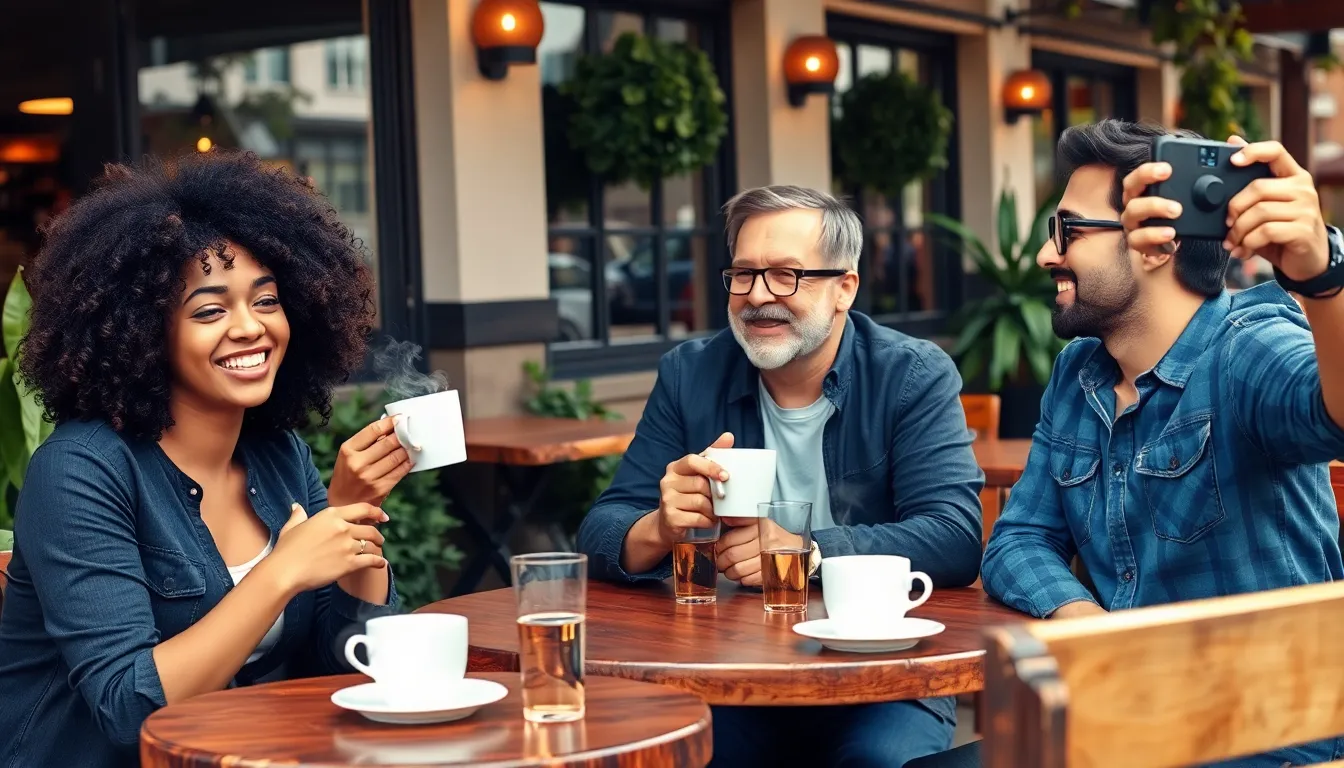In a world where swiping right can lead to a dinner date or a cat video can spark a viral sensation, social interactions have never been more complex—or entertaining. Whether it’s navigating the minefield of small talk at a party or dodging awkward silences like a pro, the art of socializing is both a science and a comedy show.
Table of Contents
ToggleUnderstanding Social Interactions
Social interactions encompass the ways individuals connect and communicate in various contexts. These exchanges can occur face-to-face or through digital platforms, shaping relationships and influencing daily experiences.
Definition of Social Interactions
Social interactions involve any form of communication between two or more individuals. They can include verbal exchanges, nonverbal cues, and shared activities. Types of interactions range from casual encounters with acquaintances to deeper discussions with friends or family. Engagements in these forms can create bonds, convey emotions, and facilitate understanding.
Importance in Daily Life
Social interactions play a vital role in personal development and well-being. They enhance emotional health through connections and support networks. Regular engagement with others fosters communication skills, critical thinking, and empathy. Building relationships contributes to a sense of belonging, which positively impacts mental health. Positive social exchanges promote collaboration and create opportunities for personal growth and professional advancement.
Types of Social Interactions

Social interactions encompass diverse forms, each contributing to how individuals connect. Key types include verbal communication and non-verbal communication, both crucial in understanding and fostering relationships.
Verbal Communication
Verbal communication involves spoken or written words that convey messages. Conversations at coffee shops, meetings in workplaces, and discussions in classrooms exemplify this type. Effective verbal exchanges encourage clarity, build relationships, and facilitate emotional connections. Utilizing language skills enhances social experiences and reflects social cues, such as tone and context. Engaging in debates or sharing stories sparks interest and strengthens bonds.
Non-Verbal Communication
Non-verbal communication includes gestures, body language, and facial expressions that accompany spoken words. A raised eyebrow can suggest surprise while crossed arms might indicate defensiveness. Proximity during interactions conveys intimacy or discomfort. Individuals often rely on these cues to interpret feelings and intentions, sometimes more than spoken words. Understanding non-verbal signals enriches social experiences and adds depth to conversations, fostering empathy and connection. Recognizing these subtle hints improves interpersonal skills and enhances overall communication.
Factors Influencing Social Interactions
Various elements shape social interactions, enhancing how individuals connect and communicate.
Cultural Background
Cultural background plays a significant role in determining interaction styles. Different cultures possess unique communication norms and values, influencing how people approach social situations. For instance, collectivist cultures emphasize group harmony, which promotes indirect communication methods. Individuals from individualistic cultures often prioritize self-expression and direct exchanges. These cultural nuances affect non-verbal cues, such as eye contact and personal space, varying significantly across regions. Understanding these differences fosters respectful engagement and encourages smoother interactions among diverse groups.
Technology and Social Media
Technology and social media profoundly affect the dynamics of social interactions. Online platforms facilitate connections, enabling individuals to communicate across vast distances. Instant messaging and video calls enhance real-time engagement, reshaping traditional face-to-face gatherings. Social media promotes interaction through likes, shares, and comments, creating virtual communities. While these tools offer convenience, they can also lead to misunderstandings due to the absence of non-verbal cues. Balancing online communication with in-person interactions is essential for developing meaningful relationships in today’s digital age.
Impact of Social Interactions
Social interactions significantly influence various aspects of life, promoting mental well-being and strengthening relationships.
Mental Health Benefits
Engaging in social interactions fosters a sense of belonging. Individuals who maintain regular social connections often experience reduced feelings of loneliness and isolation. Studies indicate that positive social experiences can elevate mood and lower stress levels. Group activities, such as team sports or community events, contribute to an increased sense of support. Maintaining these connections is essential for emotional resilience. Research highlights that engaging with friends and family can lead to improved mental health outcomes, reducing the risk of depression and anxiety.
Influence on Relationships
Relationships thrive on effective communication. Social interactions enhance understanding and empathy among individuals. Regular exchanges, whether in person or online, help build trust and intimacy. Shared experiences, such as outings or collaborative projects, deepen connections over time. Research shows that quality social interactions strengthen bonds, while negative experiences can strain relationships. A balance of verbal exchanges and non-verbal cues is critical in maintaining healthy relationships. Providing feedback through actions and words reinforces mutual respect and nurtures long-lasting connections.
Strategies to Improve Social Interactions
Improving social interactions involves specific techniques and practices that foster effective communication and connection.
Active Listening Techniques
Active listening enhances understanding in conversations. Focus on the speaker with complete attention. Nodding and using affirming phrases can encourage them to share more. Summarizing key points shows engagement and verification of shared information. Asking clarifying questions helps fill gaps in understanding, while maintaining eye contact can strengthen the connection. These techniques demonstrate respect, making the other person feel valued in the conversation.
Building Empathy
Building empathy enriches social connections. Recognizing and validating others’ feelings fosters a supportive environment. Relating personal experiences to others’ situations can bridge emotional gaps, showing shared understanding. Observing body language provides additional context about feelings, enhancing the empathetic response. Moreover, expressing appreciation for another person’s perspective reinforces mutual respect. Engaging in conversations with an open heart cultivates deeper connections, making interactions more meaningful.
Social interactions are essential to daily life and play a crucial role in personal growth and emotional well-being. By understanding the nuances of both verbal and non-verbal communication, individuals can enhance their ability to connect with others. The balance between online and in-person interactions is vital for nurturing meaningful relationships.
Employing techniques like active listening and building empathy can significantly improve social experiences. As people navigate the complexities of modern communication, these skills will not only foster deeper connections but also contribute to a sense of belonging. Ultimately, embracing the art of social interaction can lead to richer relationships and a more fulfilling life.



